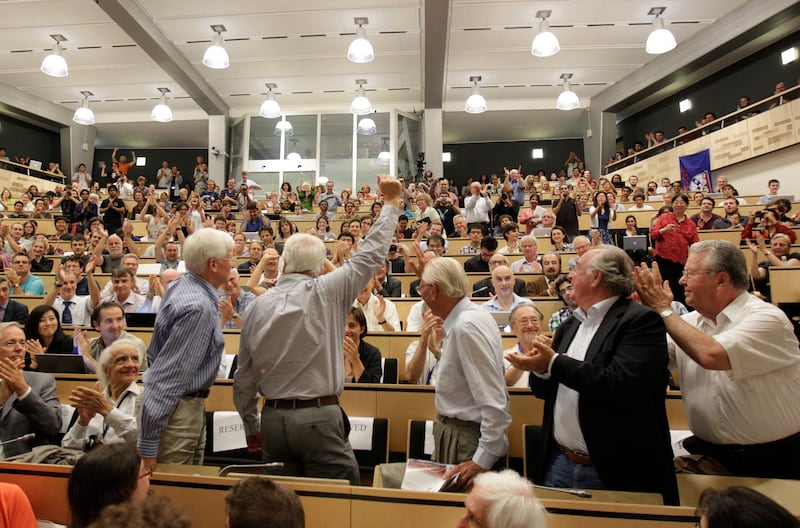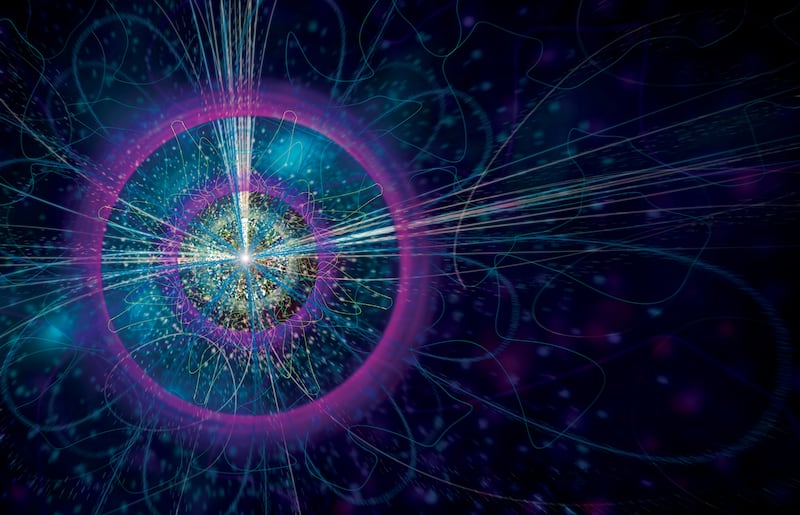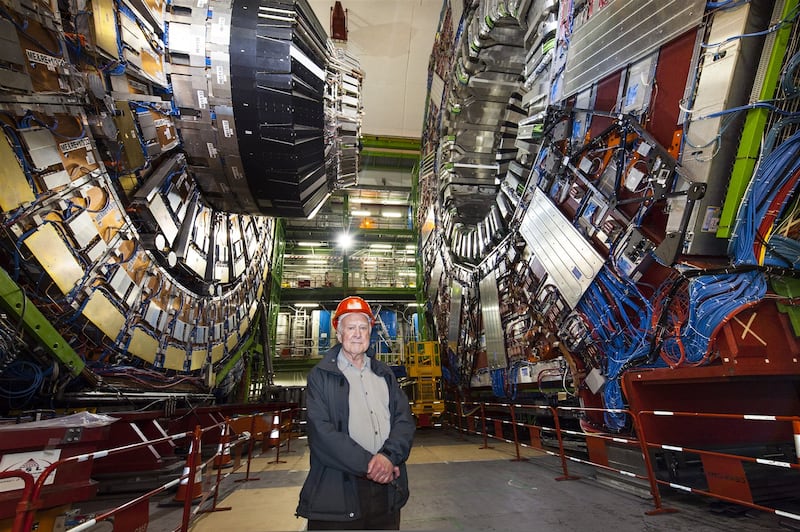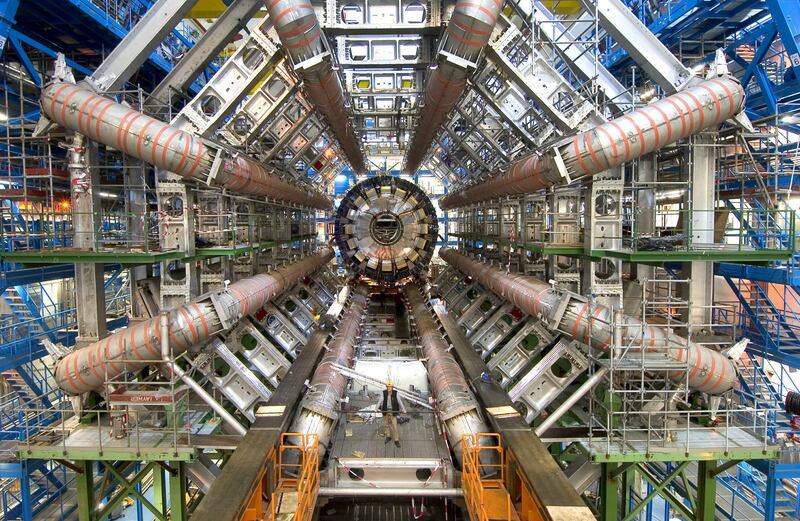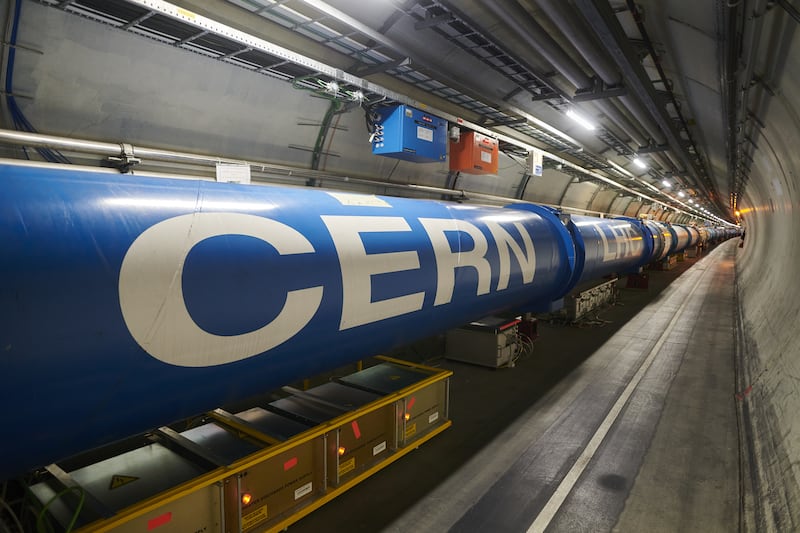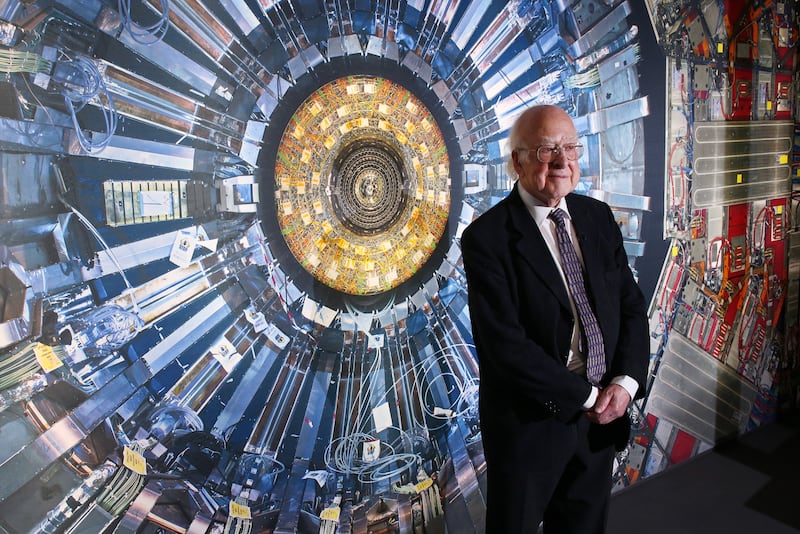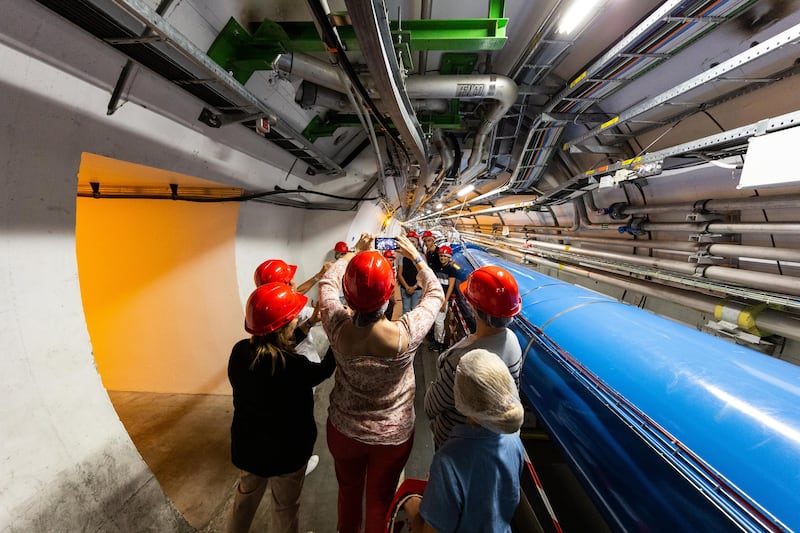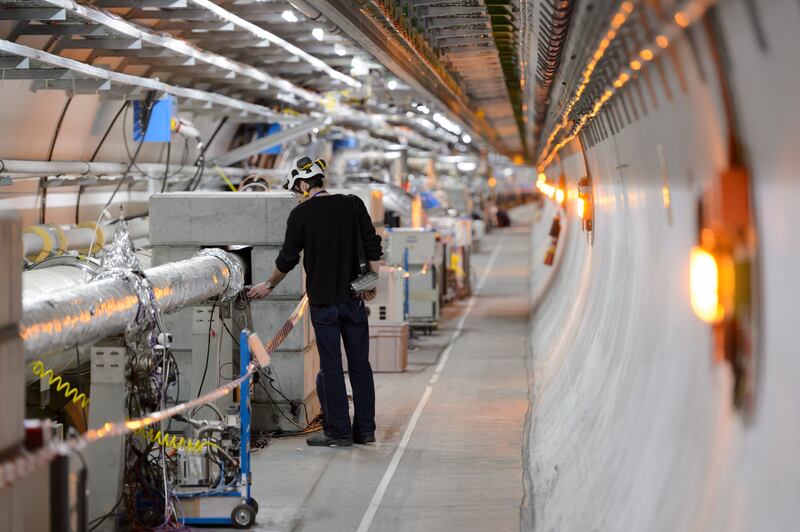The Higgs boson lives for less than a billionth of a trillionth of a second, but evaded detection for almost half a century before its discovery was announced 10 years ago on Monday in a breakthrough toasted by today’s scientists as ushering in “a revolution” in our knowledge of the universe.
The tiny particle that explains how things get their mass was detected in the bowels of the underground Cern laboratory in Switzerland, where the Large Hadron Collider sends bits of atoms whacking into each other at 99.9999991 per cent of the speed of light.
A decade on, the LHC will power up again on Tuesday after a three-year break for maintenance, as the world’s top physicists look to build on the Higgs discovery by tackling unsolved mysteries about dark matter and the fate of the universe.
“The world of theoretical particle physics has changed a lot more in these last 10 years than it did in the previous 30 years,” said Gian Giudice, the head of theoretical physics at Cern, at a briefing to mark the anniversary.
“Ten years ago, we opened this new chapter and have understood a lot of the hows,” he said, but “our goal is to understand the whys, not simply the how”.
Why was the Higgs so important? The proof that particles acquire their mass by churning through an invisible field, like winter shoes gathering snow, was a moment of excitement for physicists working on the theory.
But its more romantic allure lay in the solution to a 48-year riddle. Peter Higgs, a British scientist, had theorised the field in 1964, but a piece of the puzzle was missing — a particle, or boson, that ought to be there if the Higgs field existed.
For decades, the Higgs boson remained tantalisingly out of reach, and like a search for a mythical animal, there was no way of proving that its footprints were not an illusion until the creature had actually been sighted.
A forerunner of the LHC, the Large Electron-Positron Collider, made an assault on the Higgs in 2000 but was not quite powerful enough to bludgeon it into existence.
'Immense joy'
The LHC started up in 2008, sending particles whizzing around a 27-kilometre pipe about 100 metres below the Earth’s surface, but a magnet failure after only 10 days pushed things back by another year while repairs were made.
Once back on track, the collider started to generate possible Higgs bosons but they appeared at a rate of about one in every billion collisions, meaning it took years to collect enough data to prove anything.
Even then, it lasts for such a small amount of time before decaying — nought-point- (21 zeroes)-one seconds — that scientists have to look for the particles it morphs into, such as photons, to be able to retrace its steps.
But on July 4, 2012, a critical line was crossed when enough data had been gathered that the possibility of a mistake — that the results indicating the Higgs boson were a fluke of subatomic dice-rolling — could safely be discounted.
That made scientists confident enough to announce to the world that they had identified a Higgs-like particle, to thunderous applause from colleagues on what Cern director-general Fabiola Gianotti recalled as “a day of immense joy”.
“If you look at the predictions, all the studies that we did before July 2012, we were not really expecting to see it so quickly,” she said.
Jonathan Butterworth, who works on another of Cern's experiments, said he had never really believed the Higgs would turn up because it seemed a “huge stretch” from obscure mathematical ideas.
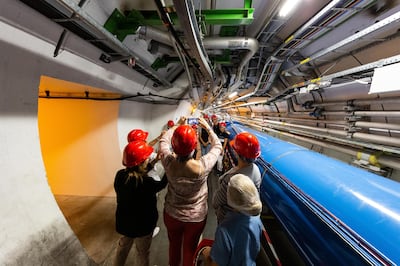
“To see it actually emerge in the data was stunning, really exciting, he said. “It was also quite hard to believe that the hugely complex accelerator and detector systems would function so amazingly well — eventually.”
The breakthrough won a Nobel Prize for Peter Higgs and fellow physicist Francois Englert, and opened up a whole new field for scientists to explore.
Ms Gianotti sees the boson as a “tool for discovery” as much as a treasure in its own right, a way of studying both the smallest and most vast phenomenons of nature.
“The Higgs boson is related to some of the most profound open questions in fundamental physics, related for instance to the structure, to the fate of the universe,” she said.
“It’s a very precise microscope to study nature at the smallest scales and distances, and at the same time is a formidable telescope to access physics at very high energy scales.”
Her dream is that the next phase of Cern’s operations will hand her scientists a piece of dark matter, which makes up about 25 per cent of the universe and does not seem to interact with light.
Mr Giudice said a lecture on dark matter today would be unrecognisable compared to one 10 years ago because of advances in the past decade — “Indeed, it was a revolution”, he said of the Higgs discovery.
Scientists want to upgrade the LHC with artificial intelligence to help crunch the massive amount of data produced by the collider, which even Cern’s computers can handle only a fraction of.
Chris Parkes, who works on one of the four mega-experiments under way at Cern, said scientists in Switzerland were making discoveries on a weekly basis and had published more than 3,000 papers since 2012.
Cern said the boundaries that were pushed during the search for the Higgs boson have led to spin-off advances in cancer treatment and aerospace, like how the Moon missions gave us space blankets and modern food packaging.
On top of that, it says, one never knows how an important discovery like electricity will end up changing the world many years or centuries later.
But what excites Mr Giudice most as the LHC spins back into life is not making headline new discoveries but gaining understanding about the fundamental laws of the universe.
“If you had met [Charles] Darwin coming back from his trip from the Galapagos, would you have asked him how many new birds you have seen?” he said.
“It’s the same for the LHC. We are making this exploration not to count the number of birds that exist in the Galapagos, but we are really trying to understand something fundamental, not about biological evolution but even more about the evolution of our universe.”
